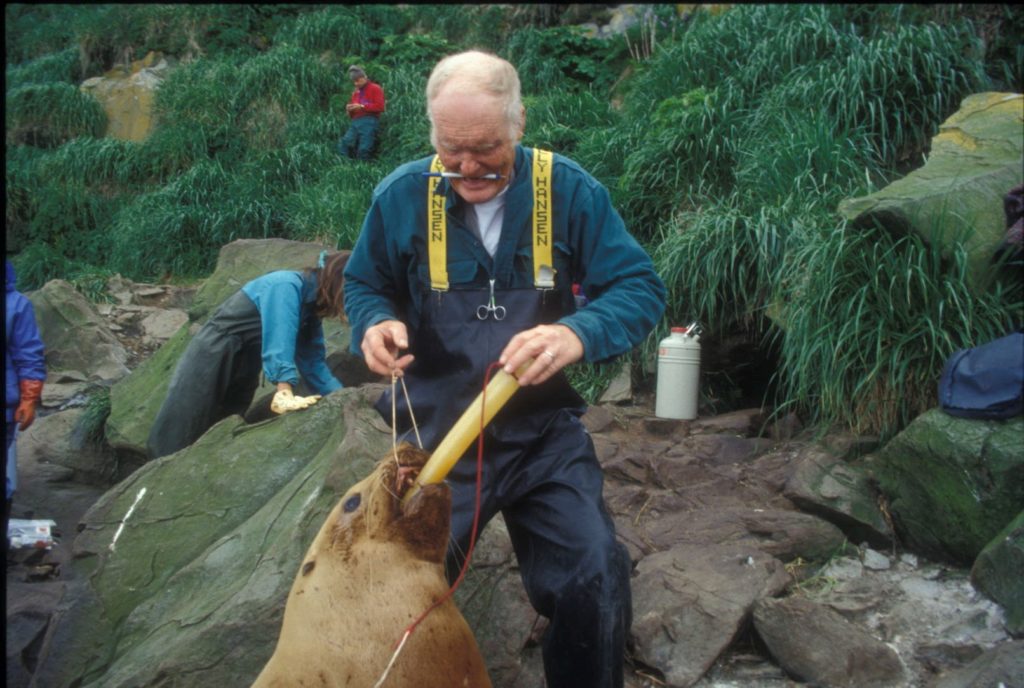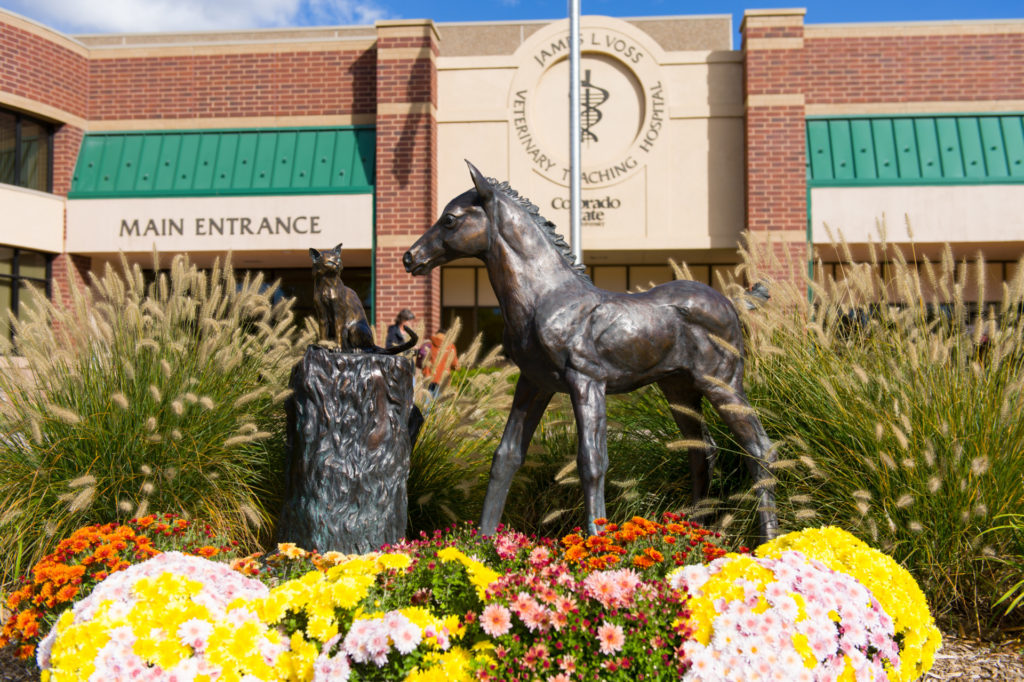Claire Tucker, in the College of Veterinary Medicine and Biomedical Sciences Office of Advancement, recently interviewed Dr. Heath; excerpts are below.
Coursework in veterinary medicine, 1955-58

Retired CSU Professor of Anesthesia
Dr. Bruce Heath was a leader in developing the field of veterinary anesthesia and worked from 1968 to 1992 as a Professor of Anesthesia in Colorado State University’s Doctor of Veterinary Medicine Program and at its Veterinary Teaching Hospital. Dr. Heath began his veterinary studies at CSU, then earned his D.V.M. at Iowa State University, followed by a master’s degree at The Ohio State University. During his career in large-animal and small-animal anesthesia, he developed new anesthesia machines, including those used for field work. After retirement, he had a second career in anesthesia for marine mammals that took him around the globe. His is a charter diplomate of the American College of Veterinary Anesthesia and Analgesia and helped start the Journal of Veterinary Anaesthesia and Analgesia.
Quotable
Be very alert. Veterinary medicine is a blossoming science. Find your avenue, follow it, and have some fun doing it.
On the leading edge of veterinary anesthesia
I cut class as a junior at Iowa State’s veterinary school to see metofane used on the first dog. I got out of vet school and went into the Air Force in the Tactical Air Command, taking care of sentry dogs. Then I became a surgery resident at The Ohio State University and built one of the first large-animal anesthesia machines. As a professor at OSU, I turned my focus to small-animal anesthesia. I liked anesthesia better than surgery because no one was doing it. There were new drugs coming out, but lots of research to be done on how to use them in the clinic. I wanted to fill that gap.

Patients come first
I came to CSU in 1968 because Dr. O.R. Adams wanted to start a clinical anesthesia program. When the new Veterinary Teaching Hospital opened in 1979, our caseload increased significantly, showing the need for full-time anesthesia clinicians. I embraced the mindset of commitment to animal patients and their owners. During my years at CSU, I did a lot of clinical trials, especially on glyceryl guaiacolate, a potent muscle relaxer that made up some of the foundational research in veterinary anesthesia.
Work with marine mammals
Dr. Terry Spraker was a student of mine, doing a lot sea lion and fur seal work early on. He came to me to help him figure out how to anesthetize these marine mammals for longer periods of time as they placed radio transmitters. Wildlife anesthesia has to be completely portable, so I built one of the first portable, backpack anesthesia machines, eventually hauling it up to Alaska to field test it. Terry and I ended up working all over the world.
Connection to environmental science
Those trackers transmitted invaluable data to federal and state agencies about the location of the animals, the depth of the water, and the temperature of the water. All of these together tracked the location of the fish. Our work has supported research into the problem of overfishing in oceans of the world. I hope our research has helped scientists gather data to support more logical fishing regulations.